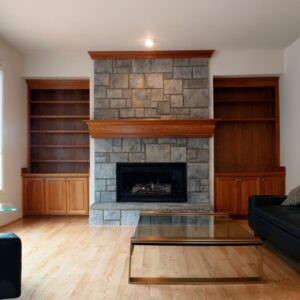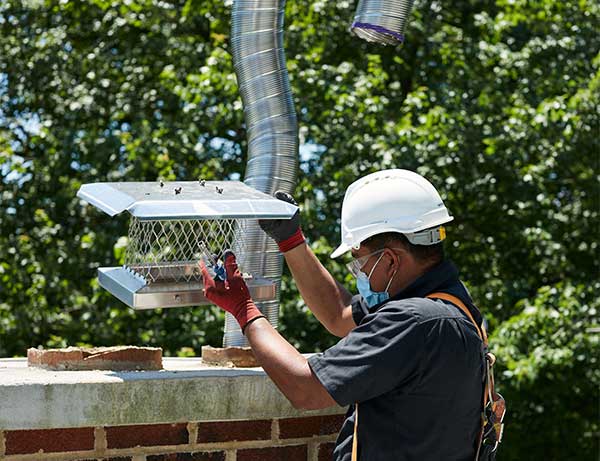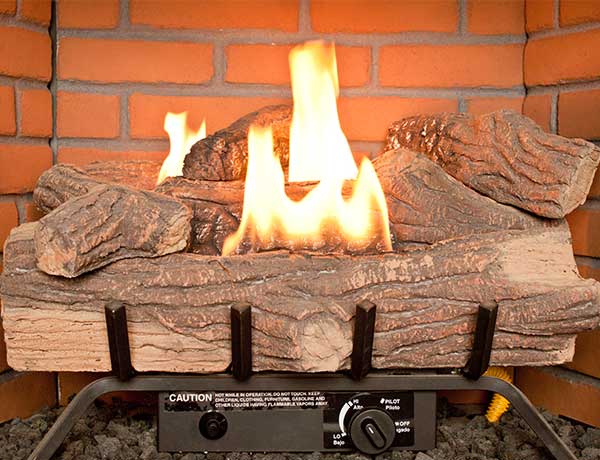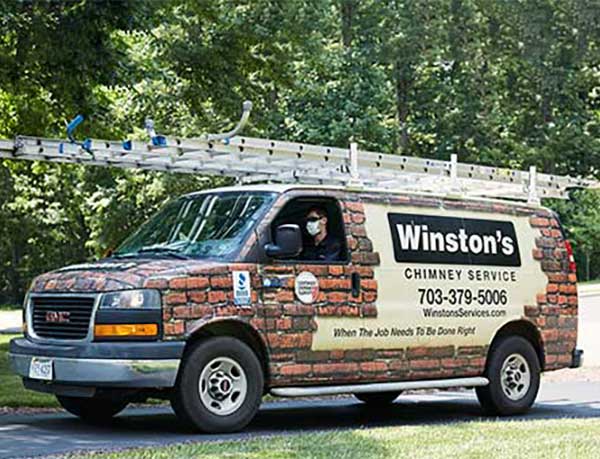The sensory experiences that your older masonry fireplace gives are hard to beat – crackling flames, the smell of burning wood, that radiant heat… Well, sometimes you get that heat. Other times, it seems it all goes up the chimney.
Unfortunately, older fireplaces are known for pulling heat out of the home and causing energy bills to increase. Warm air can easily escape through the chimney and, despite taking precautions beforehand, you will likely find this problem hard to avoid. Even more effective solutions, such as chimney dampers, can fail from time to time, and you will still lose a large amount of precious heat.
Fortunately, Winston’s Chimney Service has a solution. We can install a new fireplace insert into your old masonry fireplace that will save you money and provide much more heat to your home.
What Is a Fireplace Insert?
Fireplace inserts are sealed, energy-saving boxes that are retrofitted to sit neatly inside an existing fireplace. The warm air inside the house will not be wasted through the chimney with a fireplace insert, because the insert does not open directly into the house. Rather, they have a pane of glass in place of the opening to keep warm air in the house. A fan and vent directs the heat from the fire into the home without letting air escape outside.
Now, it may seem like a no-brainer – an insert is definitely a good choice for boosting efficiency and overall function. But now, which fuel is better – wood or gas?
The Pros of Wood-Burning Fireplace Inserts
For those who love having a real wood fire, wood-burning fireplace inserts are an excellent choice. Basically a wood stove without legs, our certified fireplace experts will install this insert into the space of your masonry fireplace, as well as install a new stainless steel liner that matches the size of your insert.
What are the benefits?
 A wood stove insert will heat your home much more effectively than your current model, while maintaining that classic look and feel of a traditional, wood-burning fireplace.
A wood stove insert will heat your home much more effectively than your current model, while maintaining that classic look and feel of a traditional, wood-burning fireplace.- Since these units burn more efficiently, there is no need to replace your wood as often as you’re used to.
- Once you get it going, it will burn for hours, so you save more on fuel, while gaining more heat.
- You should find yourself saving money on your heating and energy bill month to month.
- Newer models of wood stoves are EPA rated, meaning you will burn cleaner and send less toxins in the air.
- Most models of wood-burning inserts are equipped with fans that will circulate heated air throughout your home.
At Winston’s Chimney Service, we can set you up right. We have an extensive line of products, so you are sure to find the perfect fit for your home. Whether you are looking for steel, cast iron, or soapstone, we have options for you!
Just a quick note – if you have a prefab fireplace, this type of insert cannot safely work as prefab chimneys are not made to withstand the high temperatures produced by burning wood.
The Pros of Gas-Fueled Fireplace Inserts
For all the same benefits, only with considerably less work, consider a gas insert. With gas-fueled options, all you do is flip a switch and you are ready to enjoy your fireplace. They are easy to use, energy-efficient, and come in a wide variety of styles.
- These products can come equipped with a log set interior, so your fireplace will look and feel like the real deal, without all that extra hassle.
- Our linear burners offer a more streamlined design that friends and family will surely rave about every time they see it.
- You will not have to worry about the chores that come with burning wood (i.e. hauling/storing/seasoning wood, scooping ash piles, etc.)
- You will be able to ignite a fire by using the remote control from your couch.
- This type of insert works very well for zone heating, which can significantly lower your heating costs.
Vented or vent-free?
 For people who prefer the convenience of gas fuel and want a fireplace to heat the home, a vent-free gas long insert is a great option. With a fuel efficiency of up to 99 percent, you cannot find more economical appliances than the vent free inserts. Better yet, these units do not require any venting when used properly, so they can be installed nearly anywhere in the home. The heating power of this insert is also impressively powerful, with the ability to heat a small home by itself.
For people who prefer the convenience of gas fuel and want a fireplace to heat the home, a vent-free gas long insert is a great option. With a fuel efficiency of up to 99 percent, you cannot find more economical appliances than the vent free inserts. Better yet, these units do not require any venting when used properly, so they can be installed nearly anywhere in the home. The heating power of this insert is also impressively powerful, with the ability to heat a small home by itself.
That said, the unusual blue fire of a vent-free gas insert may not please people who love the aesthetic appeal of a classic-looking fire. To achieve realistic flames using gas fuel and to produce heat for the home, a better option is the direct vent gas insert. While more costly to install, the fuel efficiency of nearly 80 percent and the high production of clean, hot air are unbeatable.
The direct vent insert functions using a double vent system. The inner pipe expels smoke and other fumes, while fresh air is drawn into the fire in the space between the inner pipe and the outer pipe. The glass panel separating the fire from the living space guarantees the harmful fumes stay out and the warm air stays in.
Invest In A Professional Installation
If you want to ensure that you get the most you can out of your fireplace insert, then having a professional install it for you is the way to go. There is no point in purchasing and installing your insert, only to discover it is not running efficiently.
Hiring an expert will also ensure that everything is properly sealed and that your ventilation system is set up correctly with the new unit. Improper installation could lead to gas leaks and smoking issues, all of which trigger health problems for those living inside the home.
Finally, between purchasing tools, trekking to the store for parts, and dealing with any other issues that pop up along the way, you may wind up paying more than you think when you choose to do it yourself. Not to mention, if something goes wrong, you will need to pay a professional to address needed repairs, anyway.
Save yourself time, stress, and potential repair costs by having an expert set your system up correctly from the start. It’s not worth the extra hassle or the potential risks involved.
Depend On Us
At Winston’s Chimney Service, we know what will work best with your set-up. We can provide you with various options and, once installed, we can continue to provide you with inspection and cleaning services year after year. Work with us on this, and you won’t regret it.
Call or book online with our crew now.



